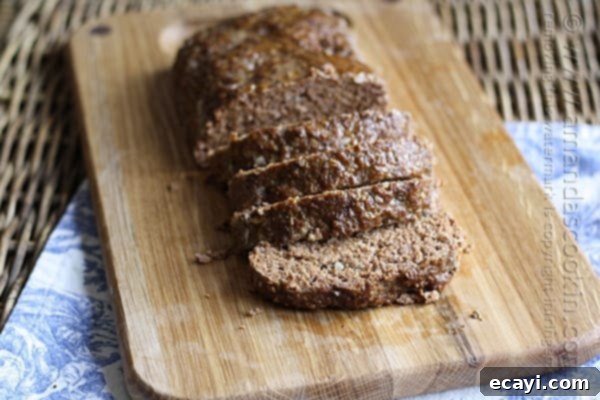Classic Quaker Oats Meatloaf: The Original Family-Favorite Recipe
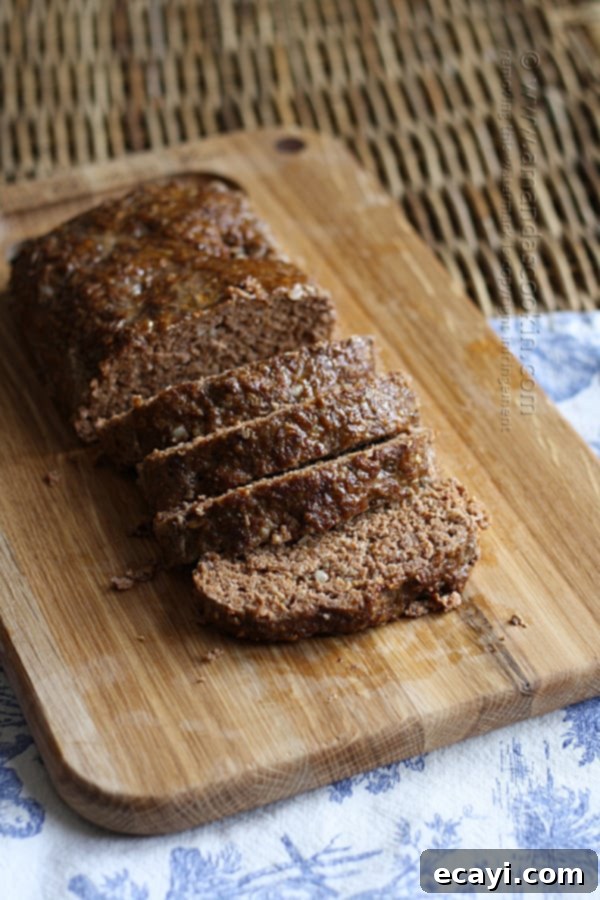
Meatloaf holds a special place in the hearts of many, often conjuring memories of comforting family dinners. While there are countless variations out there, some recipes become true classics, cherished for their simplicity and delicious flavor. This particular Quaker Oats meatloaf recipe stands as one such timeless dish. It’s a cherished, quicker alternative to more elaborate meatloaf preparations, and it’s the very recipe that graced the back of Quaker Oats oatmeal containers for many years. For those who grew up enjoying this staple, there’s a certain nostalgia associated with its distinct taste and texture.
It’s worth noting that even classic recipes can evolve. The official Quaker Oats website now features a modified version of this meatloaf, adjusted to be lower in salt and often recommending reduced-fat ground beef to reduce calorie content. While these changes might appeal to some, many culinary enthusiasts yearn for the authentic flavors of the original. This recipe brings back that beloved classic, ensuring you can recreate the exact taste you remember. Meatloaf, in all its forms, consistently ranks as one of the best ground beef dinner ideas for a satisfying and hearty meal, and this oatmeal meatloaf is no exception.
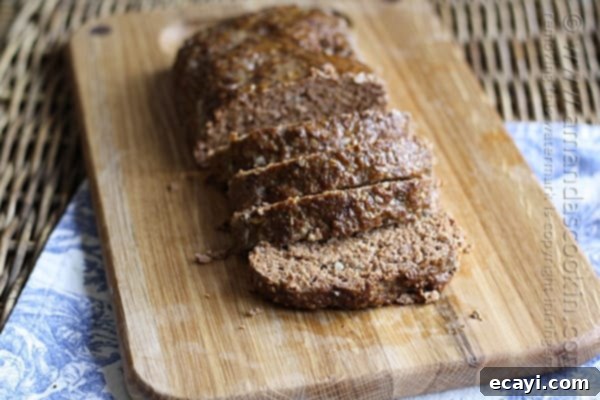
Revisiting the Original Quaker Oats Meatloaf
If your heart longs for the traditional flavor of the original Quaker Oats meatloaf, free from modern adaptations, then you’ve found the perfect recipe. This rendition stays true to the classic, delivering that familiar, comforting taste. One key difference you’ll find here is the absence of a ketchup glaze. While many enjoy a sweet and tangy ketchup topping, it’s not a personal preference for everyone. This recipe focuses on the savory richness of the meatloaf itself, allowing its natural flavors to shine through. However, if a glaze is essential for your meatloaf experience, feel free to add your favorite one; a simple mixture of ketchup, brown sugar, and a touch of mustard works wonderfully.
For those who prefer a different accompaniment, this classic meatloaf pairs beautifully with a rich brown gravy and creamy mashed potatoes. This combination creates a truly indulgent and satisfying meal, perfect for a cozy evening or a family gathering. And don’t forget the magic of leftovers! Sliced cold meatloaf makes for an incredible sandwich the next day, especially when spread with a little mayonnaise. It’s a delightful way to extend the enjoyment of this delicious dish.
When preparing the oats for this homemade meatloaf, a useful tip is to lightly process the old-fashioned oats in a food processor. This isn’t strictly necessary for the recipe’s success, but it helps break down the oats into smaller pieces. This subtle change can make a big difference in texture, especially for picky eaters who might otherwise question “What’s that?” when encountering whole oats in their dinner. The slightly finer oat texture blends more seamlessly into the meatloaf, ensuring a uniform and appealing consistency without compromising moisture or flavor.
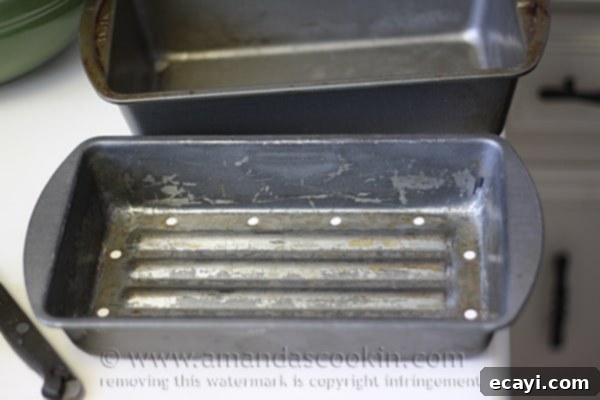
Essential Tools for the Best Meatloaf
For many years, a 2 Piece Nonstick Meatloaf Bread Pan Set (Amazon affiliate link) has been an indispensable tool in my kitchen for preparing meatloaf. As you can see from its well-loved appearance, it has seen many meatloaves through their journey from raw ingredients to perfectly baked family meals! This clever pan set features an upper pan that cradles the meatloaf, complete with holes that allow excess fat to drip through into the lower pan. This ingenious design effectively separates the greasy fat from the meat, resulting in a healthier, less oily, and wonderfully flavorful meatloaf. If you’re serious about making consistently excellent meatloaf, investing in a pan like this is something I highly recommend. It truly makes a noticeable difference in the final texture and taste of your oatmeal meatloaf.
And while you’re exploring comforting ground beef recipes, be sure to also try my homemade Salisbury Steaks – another hearty classic that’s always a hit!
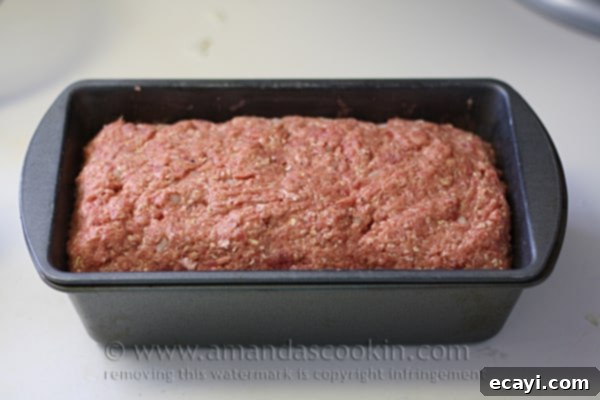
Making a great meatloaf is simpler than you might think, especially with a tried-and-true recipe like this one. The key is in the balance of ingredients and not overworking the meat mixture. The oats play a crucial role as a binder, helping the meatloaf hold its shape while also adding moisture and a subtle, pleasant texture. Paired with savory seasonings and a touch of tomato juice for flavor and tenderness, this simple meatloaf recipe promises a delicious outcome every time.
For another fantastic option, get the recipe for Prize-Winning Meatloaf from Recipe Lion.
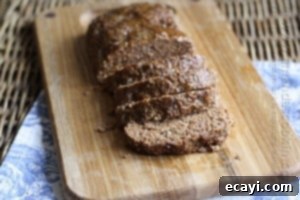
Quaker Oats Meatloaf
IMPORTANT – There are often Frequently Asked Questions within the blog post that you may find helpful. Simply scroll back up to read them!
Print It
Pin It
Rate It
Save ItSaved!
Ingredients
- 1 ½ pound ground beef
- 1 cup tomato juice
- ¾ cup old-fashioned oats uncooked
- 1 egg beaten
- ¼ cup chopped onion
- 1 teaspoon salt
- ¼ teaspoon pepper
Instructions
-
Preheat your oven to 350 degrees F (175 degrees C). Preparing your oven beforehand ensures an even bake.
-
If you prefer a smoother texture, lightly run the dry old-fashioned oats through a food processor for a few pulses to break them into smaller pieces. This step is optional but highly recommended for a less visible oat presence in the final meatloaf.
-
In a large mixing bowl, combine the processed (or whole) oats, ground beef, tomato juice, beaten egg, chopped onion, salt, and pepper. Use a fork or your hands to mix all ingredients thoroughly but gently. Be careful not to overmix, as this can lead to a tough meatloaf. Once combined, firmly press the mixture into an ungreased 4 x 8 inch loaf pan.
-
Bake in the preheated oven for one hour. The internal temperature should reach 160 degrees F (71 degrees C) for safe consumption. After baking, remove the meatloaf from the oven and let it stand for five minutes before slicing. This resting period allows the juices to redistribute, ensuring a moist and flavorful slice.
Nutrition
Frequently Asked Questions About Quaker Oats Meatloaf
To help you perfect your classic meatloaf recipe, here are answers to some common questions:
What kind of oats should I use for meatloaf?
This recipe specifically calls for old-fashioned oats (rolled oats). These provide a good texture and absorb moisture effectively without turning mushy. Quick oats can also be used in a pinch, but they may result in a slightly different texture as they are finer and cook faster. Steel-cut oats are not recommended for meatloaf as they will not soften enough during the baking process and will result in a tough, chewy texture.
Do I have to process the oats in a food processor?
No, it’s not strictly necessary. The recipe works perfectly well with whole old-fashioned oats. The suggestion to process them is primarily for texture preference. If you or your family prefer a less noticeable oat texture in your meatloaf, a quick pulse in the food processor will break them down into smaller, more integrated pieces. This can be especially helpful for those who are sensitive to textures in their food.
What type of ground beef is best for meatloaf?
For a flavorful and moist meatloaf, a ground beef with a fat content of 80/20 (80% lean, 20% fat) is often recommended. The fat contributes significantly to the flavor and keeps the meatloaf from drying out during baking. While leaner ground beef (e.g., 90/10) can be used, your meatloaf might be a bit drier, and you may want to add a touch more liquid or fat (like a tablespoon of olive oil) to compensate.
Can I add other vegetables to this meatloaf?
Absolutely! This easy meatloaf recipe is quite versatile. You can finely mince other vegetables like bell peppers (green, red, or yellow), carrots, or celery and mix them into the beef mixture. Just ensure they are chopped very finely so they cook through and blend well with the meatloaf’s texture. Sautéing them briefly before adding them can also enhance their flavor and ensure they soften properly.
How do I know when the meatloaf is fully cooked?
The best way to determine if your meatloaf is fully cooked is to use a meat thermometer. Insert it into the thickest part of the meatloaf. The internal temperature should reach 160°F (71°C) to be safely consumed. If you don’t have a thermometer, you can cut into the center; the meat should be firm and browned throughout, with no pink remaining. However, a thermometer is always the most reliable method.
How long can I store leftover meatloaf?
Leftover meatloaf should be stored in an airtight container in the refrigerator for up to 3-4 days. It can also be frozen for longer storage, up to 2-3 months. To freeze, slice the cooled meatloaf into individual portions, wrap them tightly in plastic wrap, and then place them in a freezer-safe bag or container. Thaw in the refrigerator overnight before reheating.
Can I make this meatloaf ahead of time?
Yes, you can prepare the meatloaf mixture ahead of time. Form it into a loaf and place it in the pan, then cover it tightly with plastic wrap and refrigerate for up to 24 hours before baking. This can be a great time-saver for busy weeknights.
The recipes on this blog are tested with a conventional gas oven and gas stovetop. It’s important to note that some ovens, especially as they age, can cook and bake inconsistently. Using an inexpensive oven thermometer can assure you that your oven is truly heating to the proper temperature. If you use a toaster oven or countertop oven, please keep in mind that they may not distribute heat the same as a conventional full sized oven and you may need to adjust your cooking/baking times. In the case of recipes made with a pressure cooker, air fryer, slow cooker, or other appliance, a link to the appliances we use is listed within each respective recipe. For baking recipes where measurements are given by weight, please note that results may not be the same if cups are used instead, and we can’t guarantee success with that method.
